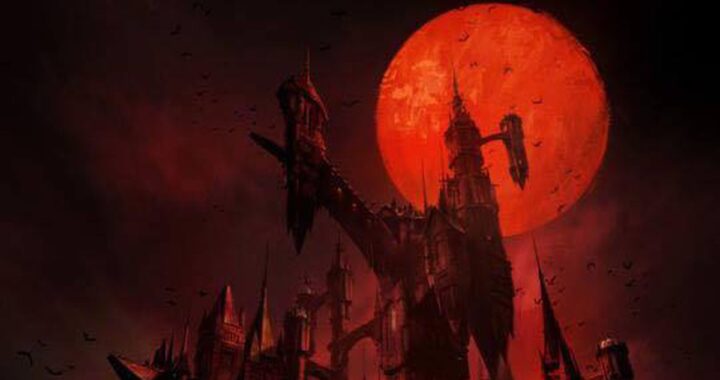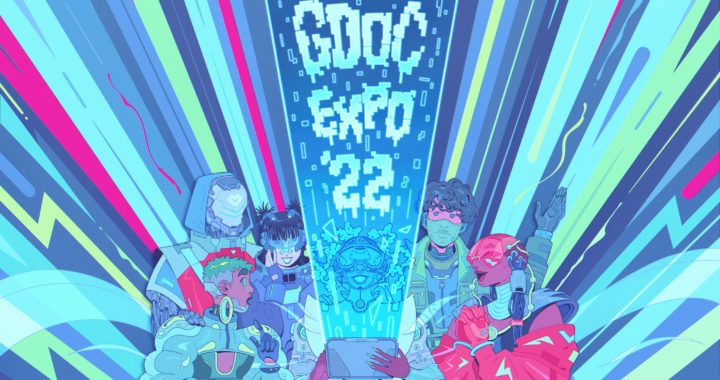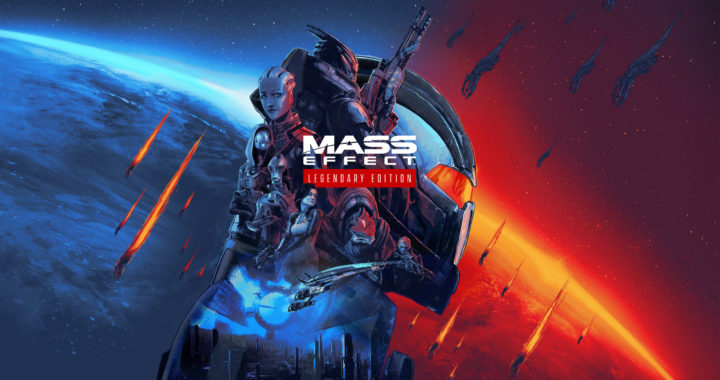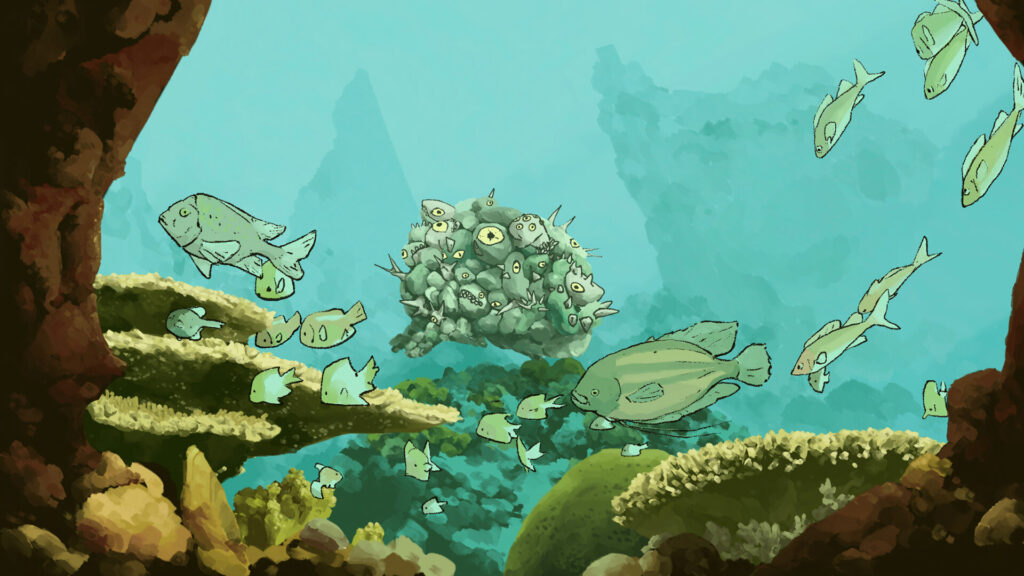
Image Source: N. O. Marsh
Five 2023 indie games to play before the year ends
Unsurprisingly, 2023 has been another packed year of game releases, and things don’t show any sign of slowing down as we head into its final portion. With blockbusters like Detective Pikachu Returns and the Super Mario RPG remake on the horizon, plus several higher profile indies like El Paso Elsewhere and Slay the Princess joining them, it felt like a good time to shine a spotlight on some titles that I’ve found really special so far, ahead of the onslaught of holiday releases.
South Scrimshaw Pt. 1
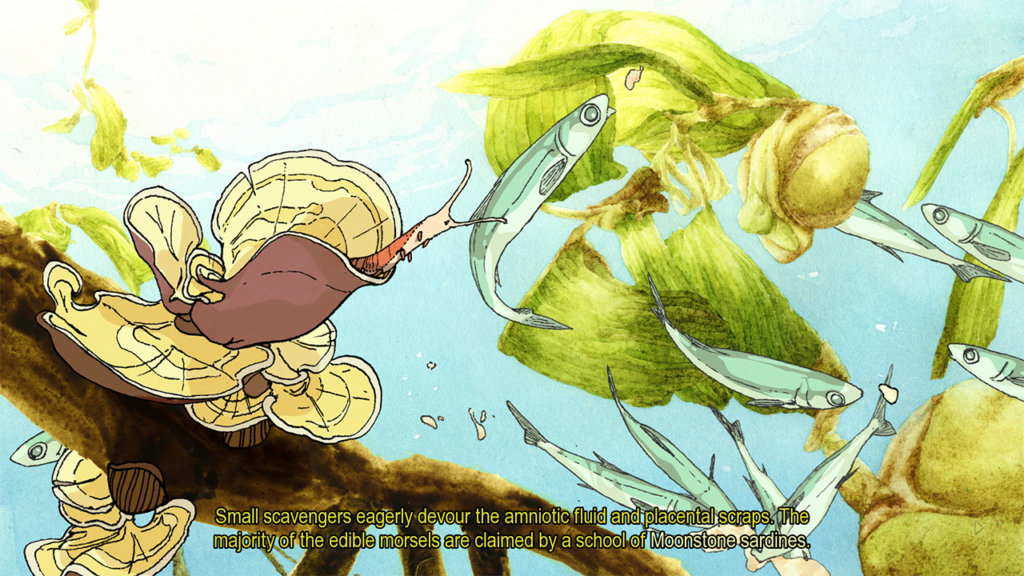
N. O. Marsh’s South Scrimshaw Pt. 1 is a gorgeous visual novel that’s framed as a nature documentary taking place on an alien planet. It follows a unique species of whale, called the Brillo whale, which survive and thrive in the ocean by integrating other flora and fauna into their bodies, effectively becoming their own mobile ecosystem.
Our story follows a newborn Brillo male that is learning about the world and its species. South Scrimshaw manages to elegantly and effectively capture the vibe of a nature documentary, splitting the difference between something like My Octopus Teacher and March of the Penguins.
Everything from the art style, to the narration (which was created using AI vocals; we talk about that more on this episode of Indie Mixtape), to the different scientific maps and diagrams we see make this feel like a real nature documentary. But even with all that realism, there’s still a lot of expressivity across all the creatures you encounter, but especially our baby whale. He is so cute I genuinely can’t get over it.
Midnight Scenes: From the Woods

I’ve been a fan of Octavi Navarro’s Midnight Scenes games for years now, but even after all this time, I still find myself amazed by how well Navarro is able to create such cohesive, bite-sized horror experiences every time. With this game in particular, I imagine it’s the result of years of iteration and the addition of a writing partner.
At any rate, the result is a small, effective, point-and-click horror game about an 18 year-old boy named Elijah who is staying at a mental hospital for youths to treat his extreme panic disorder. We meet him as he’s relaying the details of the past week to one of his doctors, explaining how he became close with the center’s new patient, a kidnapping victim who has only recently been found named Oliver.
As we watch the true events of the week alongside Elijah’s narration, it becomes apparent that he’s lying to his doctor, which raises the question: why? That’s what we discover as we watch the boys and slowly discover the truth about Oliver’s past, and how it’s impacting the present.
This is a short, sweet, and scary experience that juggles several themes and social commentary expertly.
Amarantus
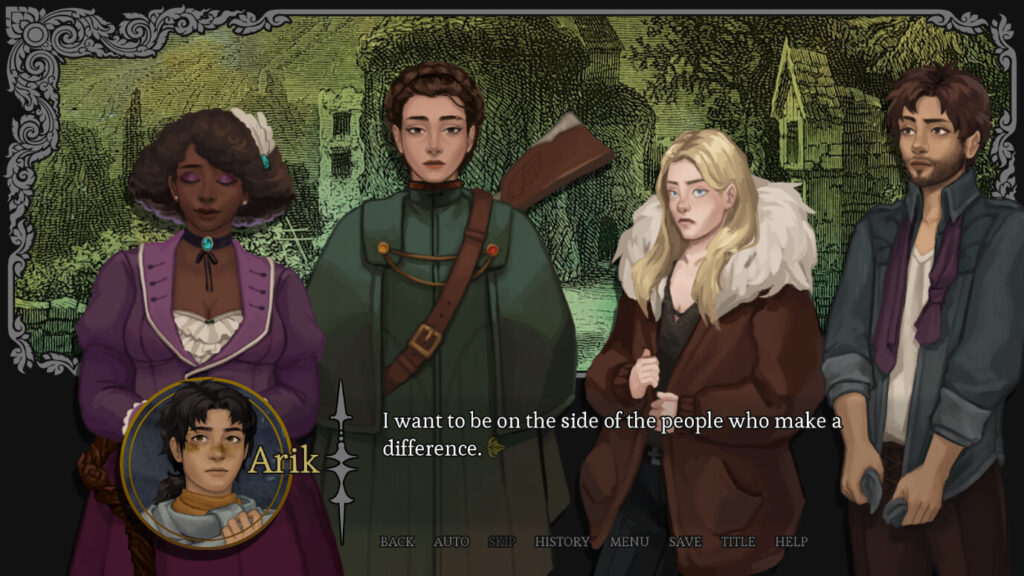
Amarantus is the story of Arik, a young man whose parents have finally been called on their revolutionary talk, resulting in their arrest and their house being burnt down. Arik is the only one who escapes, hiding with a wealthy friend in town.
This friend isn’t convinced that Arik should really be freaking out, but she agrees to help him flee the town, using it as a way to get her struggling former-sailor brother away from his day-to-day as well. Arik has more or less been radicalized by these events, however, and his goal becomes to either depose or kill the reigning lord responsible.
His desire clashes strongly with what his other companions think this trip is about, which creates the main tension of Amarantus. This is a game less about actual revolution, and more the interpersonal dynamics between those who are trying to make it happen, and those who aren’t ready for such drastic change. It’s well-written to the point of frustration at times, and I can’t recommend it enough to narrative game fans.
The Cosmic Wheel Sisterhood
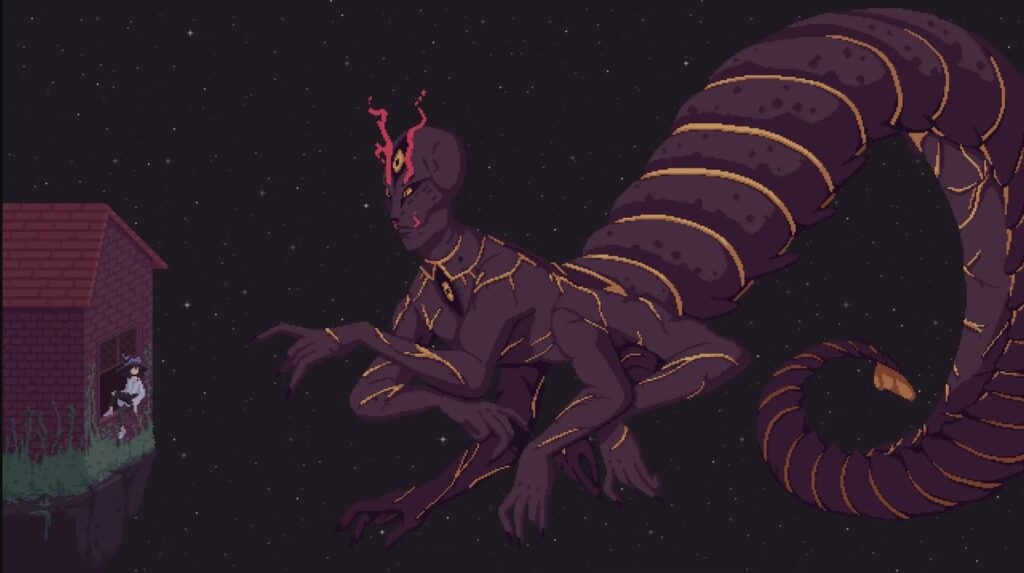
The Cosmic Wheel Sisterhood is deconstructeam’s sophomore effort after The Red Strings Club, but there’s absolutely no slump here.
Using this team’s signature, beautiful pixel art, this game tells the story of Fortuna, a witch who has served about 300 out of her 1000 years of the exile her coven leader sentenced her to. Fortuna is absolutely sick of her solitude, and has decided to do something pretty extreme to end it: summon a forbidden creature called a Behemoth.
This creature improves Fortuna’s natural talents, taking her from a tarot card reader to a voyeur of destiny with a deck she builds herself. Though she doesn’t fully regain her freedom at first, she does get to start seeing old friends again, allowing her (and us as players) to read their futures and build new cards with the energy generated from readings. Using the cards gives us insight into each characters’ life, both past and present. How Fortuna uses that information will impact her relationships with these characters, and ultimately how the game ends.
Beyond having a really cool and visually appealing core mechanic, The Cosmic Wheel Sisterhood also tells several great stories within its larger narrative. It’s also queer as hell.
It gets so lonely here
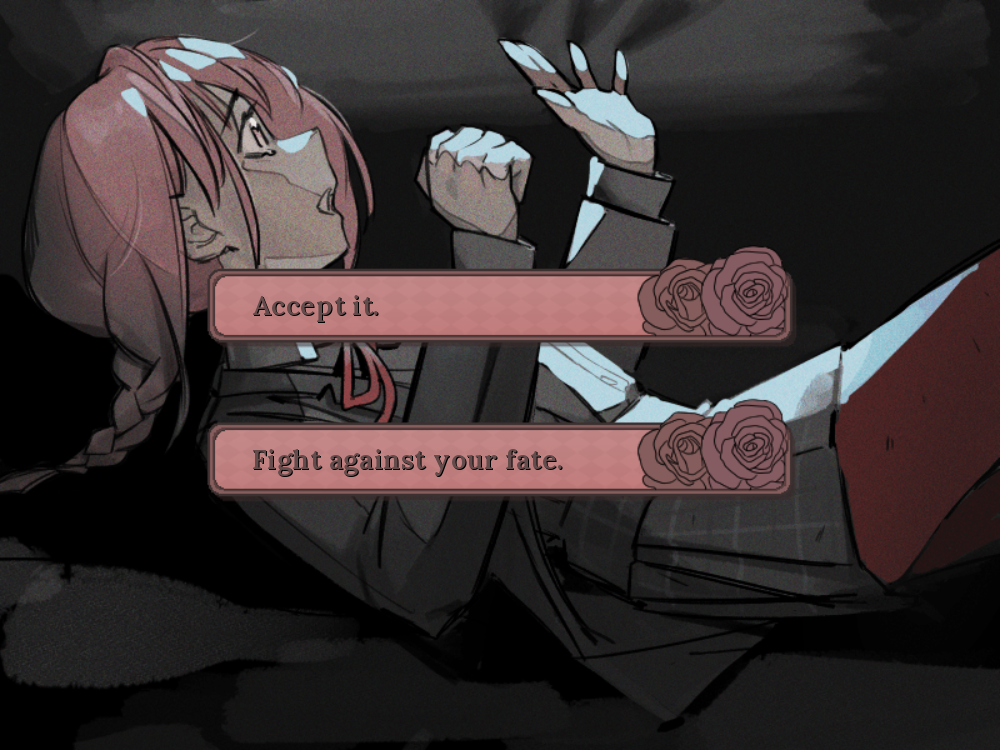
I haven’t encountered many games that really capture what it feels like to experience toxic and/or abusive relationships. One is Kaitlin Tremblay’s Halfway, to the lamppost. The other is ebi-hime’s It gets so lonely here.
That said, these games embody different parts of those experiences. While Halfway, to the lamppost looks at the actual experience of abusive partnerships and how those shape people in the long run, It gets so lonely here shows what it feels like to be someone prone to choosing toxic partners.
The game follows a young woman who is fleeing from an unknown something in a dark forest. She eventually reaches a three-way fork in the road, each of which leads to one of the game’s three routes. There are beautiful young women in each location our protagonist can run to, and each have red flags she can’t seem to see thanks to her insecurity. Until she is able to change herself, she is doomed to repeating a toxic cycle that destroys her.
For those who simply love a creepy wlw visual novel, there’s plenty to enjoy here. But those with similar experiences may find even more depth within this relatively short game.


